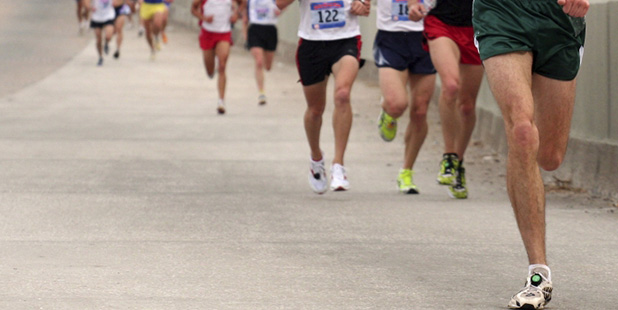“For many marathon runners, there are plenty of training programs out there, but one that really helps you prepare is cross training.”
It’s early on an October morning. The sky is tinged with a cold, slowly warming pink as the sun begins to wake the rest of the sleepy, dark world beneath it. Below, there are a few who have chosen to forgo another hour of rest and instead opted to get up and test their limits.
Breaking the crest of the hill is my best friend, running at a steady, loping pace that she could keep up for hours if she had to. She’s training for a marathon, and I offered to come out and run with her, partly for the exercise and partly for moral support.
I had done a couple of laps but (at the time) I was no runner, and was now sitting on the pavement next to dewy grass stretching. Since I’ve started stretching she’s passed me a couple of times on the track. As she continues her training, she is looking for more and more ways to push her limits so she can achieve the best time while being able to actually finish the run.
For many marathon runners, there are plenty of training programs out there, but one that really helps you prepare is cross training. Cross training involves runners, or any other type of athlete, partaking in a combination of exercises from disciplines other than their own. The purpose of this is to improve overall fitness, and for runners it can have other benefits as well, such as quicker recovery time, the prevention of further injury, rehab of an old injury, and it can be a great way to change your routine up if you get bored. Here are some tips to remember when choosing what kind of cross-training you want to do.
- Low to No Impact Exercise: Running is a high impact exercise, which means that it can be hard on your body. The reason for this is the range of movement you complete as you run. While most exercise involves the contraction of muscles, running actually requires the extension of muscles, specifically in the knee, to support other muscles being stretched. When cross training, it’s a good idea to choose an exercise that is low to no impact. This will give your muscles a chance to rest.
Recommended Exercises: Swimming, Cycling, Yoga, and Pool Running
- Exercise New Muscles: It might be tempting to find an exercise that will strengthen the muscles that you use to run, but in reality cross training is a great opportunity to exercise muscles that you don’t normally use when running. These muscle groups could have been neglected as you’ve been marathon training, so they’re not all that strong. There are plenty of exercises that offer the opportunity to exercise new muscles.
Recommended Exercises: Swimming, cycling, yoga, strength training
- Injury Recovery and Prevention: What’s great about cross training is that many exercises can help you recover from injuries. The easy way to do this is to choose a low to no impact exercise, like the ones listed above. By exercising unused muscles, you can lower the risk of them having to overcompensate while you’re running your marathon. Luckily, there’s a ton of exercises you can do to recover from and prevent injuries.
Recommended Exercises: Low to no impact exercises, new muscle group exercises.
Whichever exercise you choose, know that cross training is a great way to prepare yourself for the enormous undertaking of a marathon. By cross training, you will give your body a chance to recover, grow strong, and it may even help you beat a personal record!
-Rachel
Latest posts by Rachel Stires (see all)
- Marathon Training: Cross-Training Exercises Best for Runners - November 2, 2016

